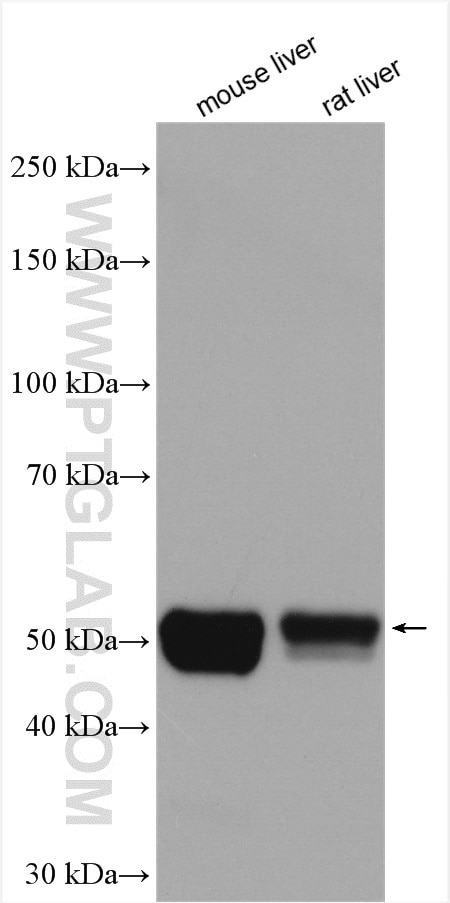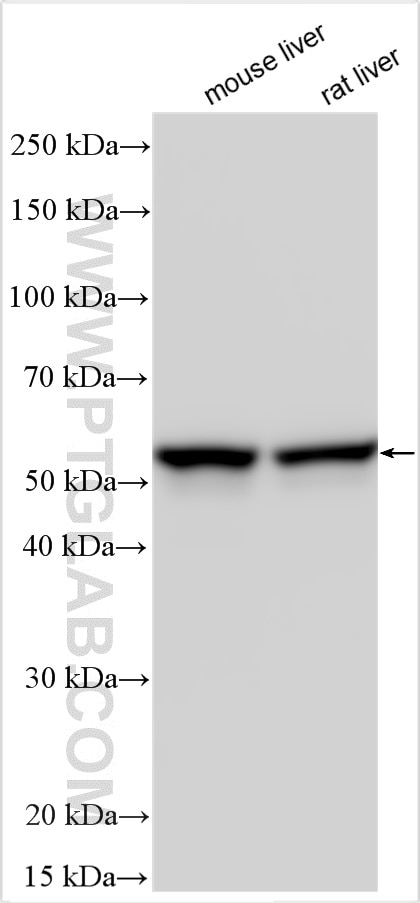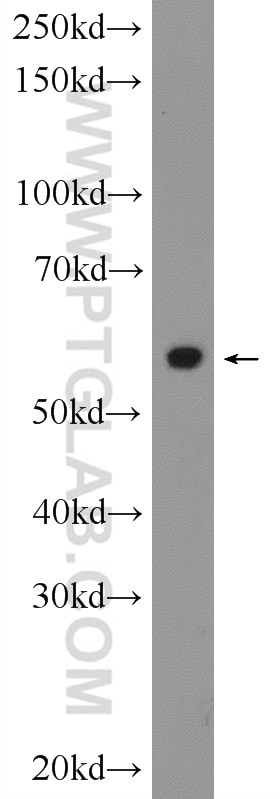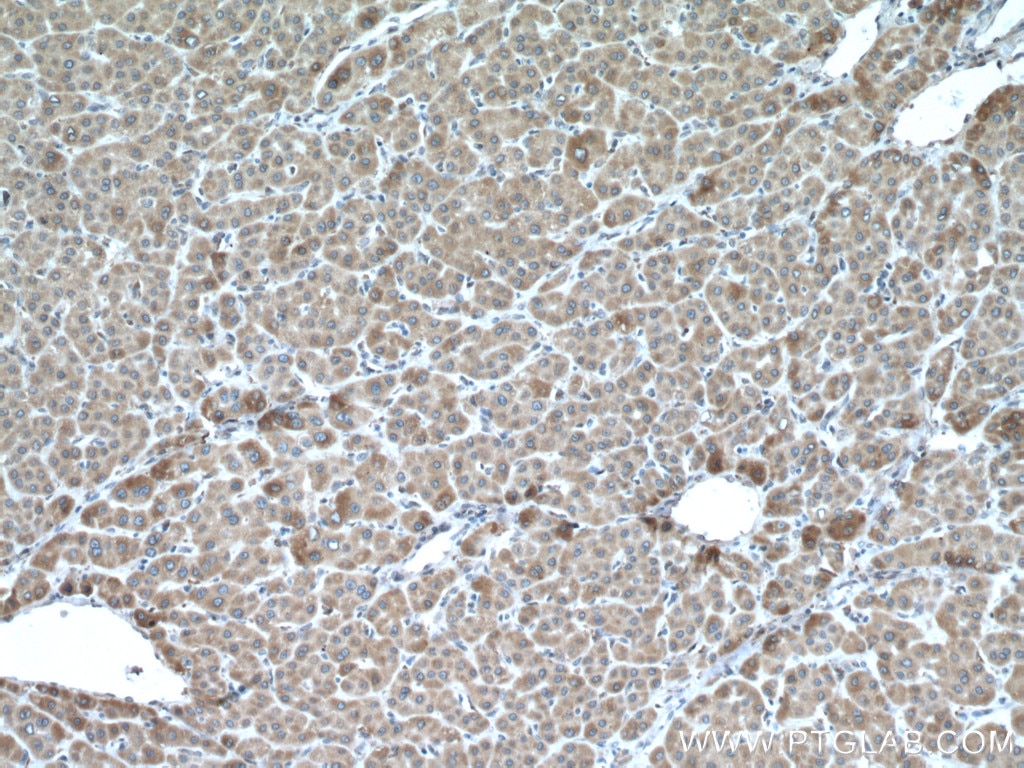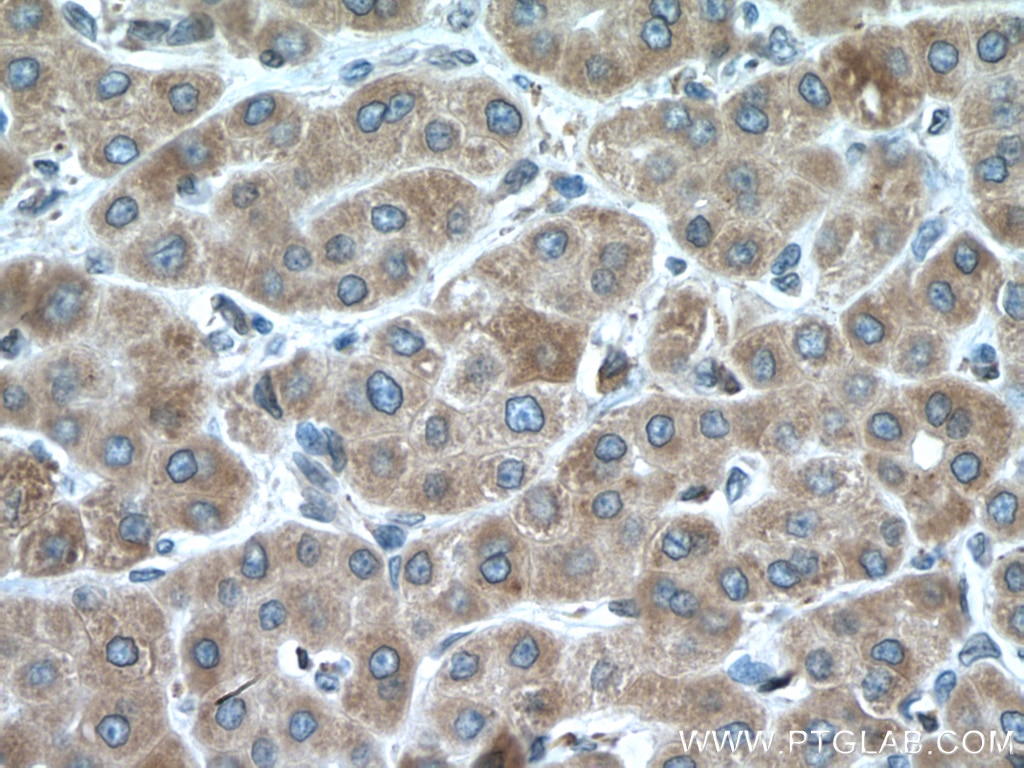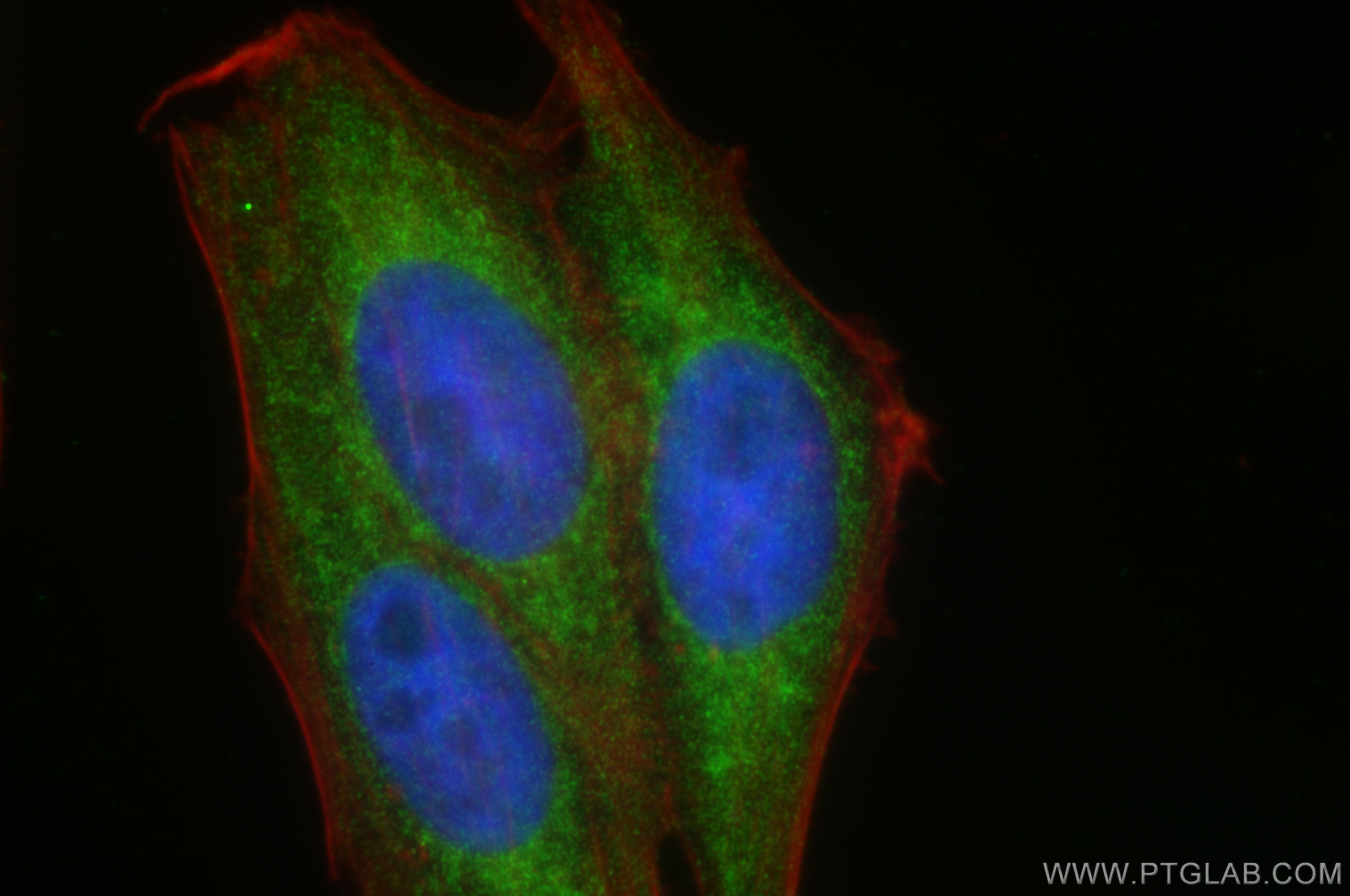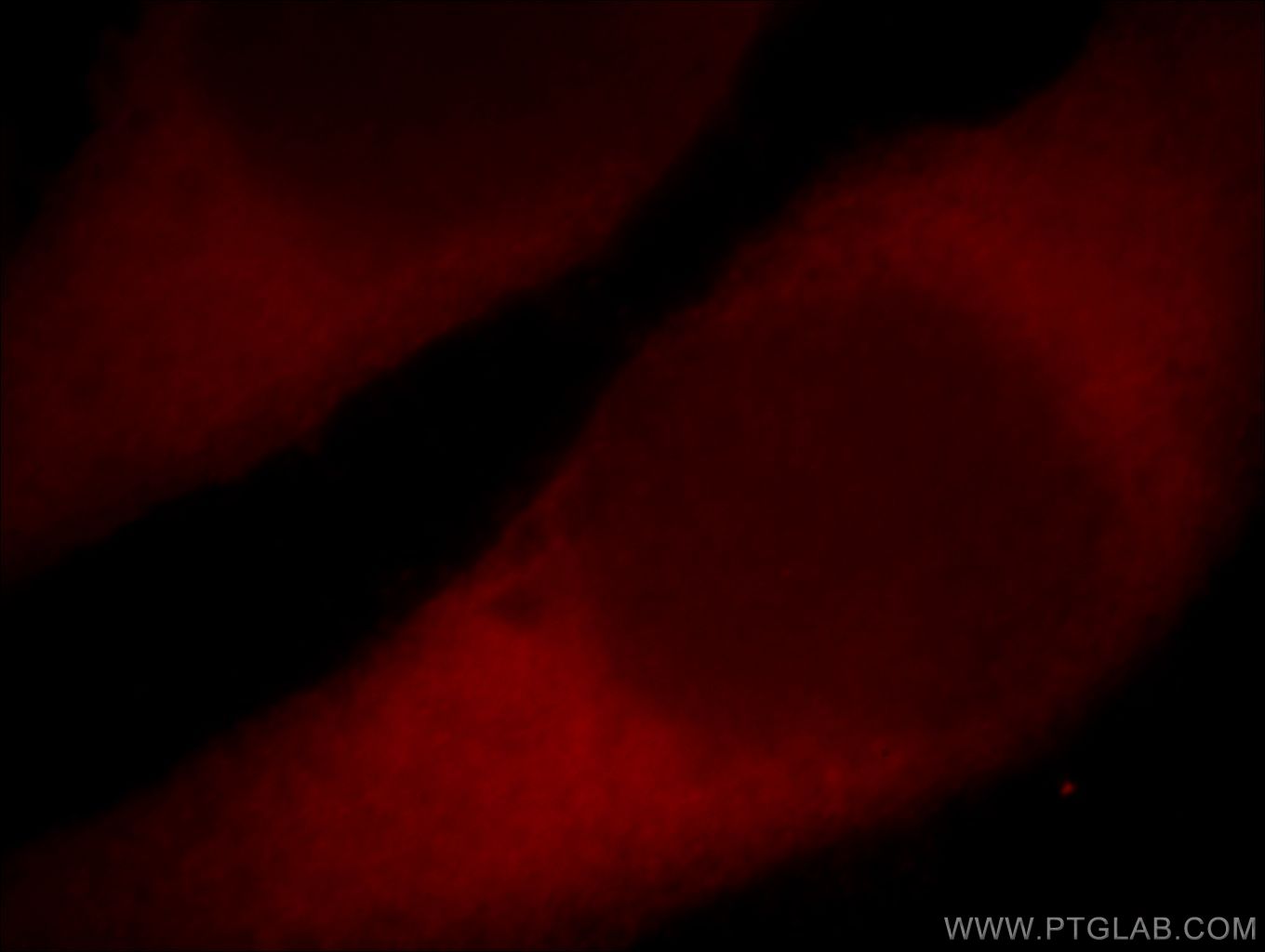Validation Data Gallery
Tested Applications
| Positive WB detected in | mouse liver tissue, Jurkat cells, rat liver tissue |
| Positive IHC detected in | human liver cancer tissue Note: suggested antigen retrieval with TE buffer pH 9.0; (*) Alternatively, antigen retrieval may be performed with citrate buffer pH 6.0 |
| Positive IF/ICC detected in | HepG2 cells, HeLa cells |
Recommended dilution
| Application | Dilution |
|---|---|
| Western Blot (WB) | WB : 1:2000-1:10000 |
| Immunohistochemistry (IHC) | IHC : 1:50-1:500 |
| Immunofluorescence (IF)/ICC | IF/ICC : 1:200-1:800 |
| It is recommended that this reagent should be titrated in each testing system to obtain optimal results. | |
| Sample-dependent, Check data in validation data gallery. | |
Published Applications
| KD/KO | See 1 publications below |
| WB | See 106 publications below |
| IHC | See 9 publications below |
| IF | See 9 publications below |
Product Information
19937-1-AP targets CYP2E1-Specific in WB, IHC, IF/ICC, ELISA applications and shows reactivity with human, mouse, rat samples.
| Tested Reactivity | human, mouse, rat |
| Cited Reactivity | human, mouse, rat |
| Host / Isotype | Rabbit / IgG |
| Class | Polyclonal |
| Type | Antibody |
| Immunogen |
Peptide 相同性解析による交差性が予測される生物種 |
| Full Name | cytochrome P450, family 2, subfamily E, polypeptide 1 |
| Calculated molecular weight | 57 kDa |
| Observed molecular weight | 50-57 kDa |
| GenBank accession number | NM_000773 |
| Gene Symbol | CYP2E1 |
| Gene ID (NCBI) | 1571 |
| RRID | AB_10646444 |
| Conjugate | Unconjugated |
| Form | |
| Form | Liquid |
| Purification Method | Antigen affinity purification |
| UNIPROT ID | P05181 |
| Storage Buffer | PBS with 0.02% sodium azide and 50% glycerol{{ptg:BufferTemp}}7.3 |
| Storage Conditions | Store at -20°C. Stable for one year after shipment. Aliquoting is unnecessary for -20oC storage. |
Background Information
CYP2E1, also named as CYPIIE1, 4-nitrophenol 2-hydroxylase, P450-J and CYP2E, belongs to the cytochrome P450 family. CYP2E1 metabolizes several precarcinogens, drugs, and solvents to reactive metabolites. It inactivates a number of drugs and xenobiotics and also bioactivates many xenobiotic substrates to their hepatotoxic or carcinogenic forms. CYP2E1 catalyze the reaction: 4-nitrophenol + NADPH + O2 = 4-nitrocatechol + NADP+ + H2O. CYP2E1 can be detected as 50-57 kDa(full-length) and ~40 kDa(N-terminal signal peptide cleaved) (PMID: 21130154). The antibody is specific to CYP2E1.
Protocols
| Product Specific Protocols | |
|---|---|
| IF protocol for CYP2E1-Specific antibody 19937-1-AP | Download protocol |
| IHC protocol for CYP2E1-Specific antibody 19937-1-AP | Download protocol |
| WB protocol for CYP2E1-Specific antibody 19937-1-AP | Download protocol |
| Standard Protocols | |
|---|---|
| Click here to view our Standard Protocols |
Publications
| Species | Application | Title |
|---|---|---|
Cell Host Microbe Liberation of daidzein by gut microbial β-galactosidase suppresses acetaminophen-induced hepatotoxicity in mice | ||
Nat Metab LIFR regulates cholesterol-driven bidirectional hepatocyte-neutrophil cross-talk to promote liver regeneration | ||
Nat Commun The mitochondrial fusion protein OPA1 is dispensable in the liver and its absence induces mitohormesis to protect liver from drug-induced injury | ||
Hepatology Liver-specific deficiency of unc-51 like kinase 1 and 2 protects mice from acetaminophen-induced liver injury. | ||
Cell Biol Toxicol Protecting mitochondria via inhibiting VDAC1 oligomerization alleviates ferroptosis in acetaminophen-induced acute liver injury. |

